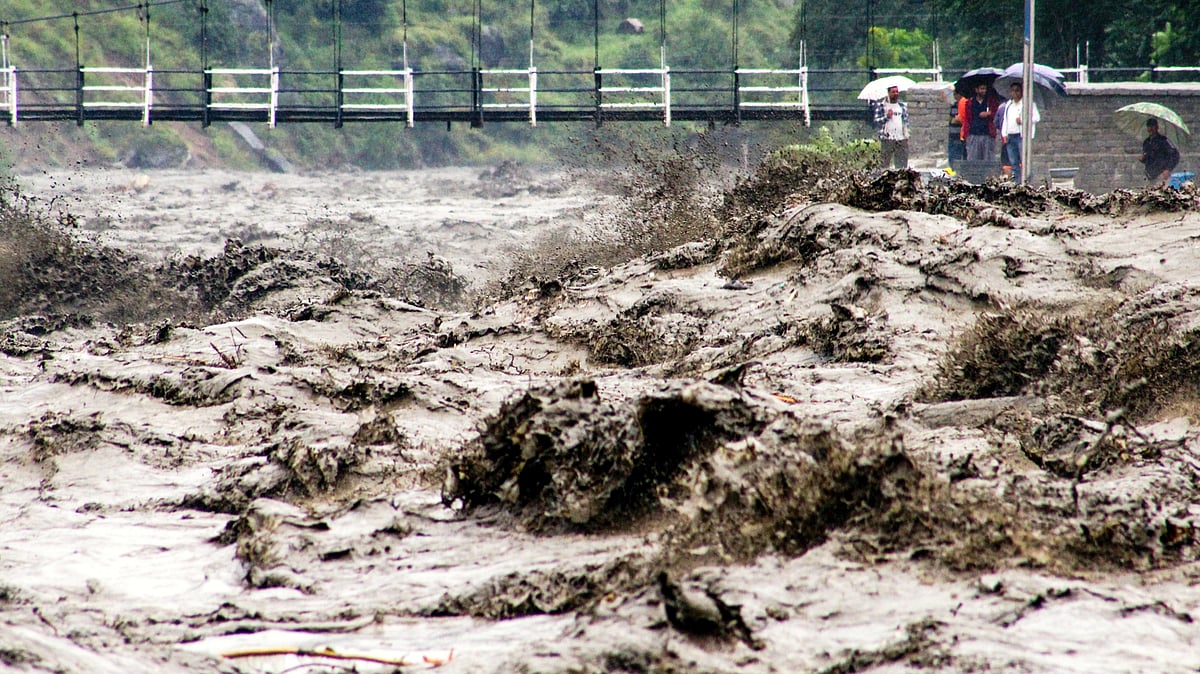Environment
Monsoon 2025: Himalayan fragility laid bare amid nationwide rain havoc
Five killed, 14 injured in landslide en route to Vaishno Devi shrine,

This year’s monsoon has again underscored the twin realities of India’s rainy season: while crucial for replenishing rivers and sustaining agriculture, it also brings destruction when relentless downpours collide with fragile ecosystems and vulnerable infrastructure made worse by relentless human interference.
From Jammu and Kashmir to Kerala, extreme weather has caused landslides, flash floods, road blockages, and tragic loss of life. The Himalayan states, already under ecological strain, remain the epicentre of disaster.
Jammu & Kashmir: Pilgrimage struck by tragedy
In Reasi district, a landslide on the Mata Vaishno Devi shrine route killed five people and injured 14 on Tuesday. The collapse occurred near Adhkwari, midway along the 12-km trek, after three days of incessant rainfall.
Boulders, trees, and mud came crashing down, catching pilgrims off guard. Rescue teams rushed to the site, but operations were hindered by ongoing rain. Authorities suspended the pilgrimage, raising concern for the thousands who travel annually to the shrine.
Such incidents echo earlier monsoon tragedies in the state — including the 2014 Kashmir floods, when the Jhelum overflowed and devastated Srinagar. Experts warn that unchecked construction along riverbanks and slopes has left the region dangerously exposed.
On Tuesday, Jammu City saw an unprecedented 248 mm of rainfall in just nine hours by 5.30 pm, setting a new all-time record for the IMD station. The previous highest 24-hour rainfall was recorded back on 5 August 1926, at 228.6 mm.
Published: undefined
Himachal Pradesh: Highways and homes lost
In Himachal Pradesh, landslides across Shimla, Kullu, and Mandi have blocked major highways, including the Shimla–Chandigarh and Manali–Leh routes. Entire villages have been cut off, houses swept away, and vehicles trapped under debris.
This devastation recalls the state’s monsoon of 2023, when over 400 people were killed and bridges, roads, and buildings crumbled under record rainfall. Urban centres such as Shimla, heavily burdened by tourism and construction on steep slopes, have proved particularly vulnerable.
Published: undefined
Uttarakhand: Pilgrimage disruptions, again
The Char Dham yatra — already prone to interruptions due to weather — has once again been suspended in Chamoli and Rudraprayag after roads were blocked by slides and bridges washed away.
Helicopter rescues were conducted for stranded pilgrims. The scenario mirrors the catastrophic 2013 Kedarnath floods, where a cloudburst and glacial burst triggered widespread devastation, killing thousands. Despite subsequent warnings, large-scale hydropower projects and road expansions continue to destabilise slopes.
Published: undefined
Northeast and eastern Himalayan states
Sikkim and Arunachal Pradesh are reporting repeated landslides and road blockages. The Gangtok–Siliguri highway, a vital link for Sikkim, has faced disruptions due to falling rocks. In Arunachal, the Siang and Subansiri rivers have swollen, submerging villages.
Downstream, in Bihar, rivers originating in Nepal and the Himalayan foothills are in spate. Seasonal flooding has displaced thousands in Darbhanga and Sitamarhi, reviving the annual cycle of distress that remains largely unresolved despite decades of flood-control projects.
The rest of India: Monsoon’s wide reach
The fury has not been limited to the north.
Assam and the Northeast Plains: Vast stretches of Assam’s Brahmaputra valley remain under water. Relief camps are housing thousands as embankments give way under pressure from rising waters.
Madhya Pradesh & Chhattisgarh: Heavy rainfall has inundated agricultural fields, disrupting transport and damaging crops. Low-lying areas in Bhopal and Raipur have faced prolonged waterlogging.
Maharashtra & Konkan coast: The Mumbai–Goa highway was repeatedly blocked by flooding and tree falls. In Ratnagiri and Raigad, landslides have claimed lives.
Southern states: Kerala and coastal Karnataka, while not yet facing the full brunt, have reported localised flooding and crop loss in paddy fields. The memory of Kerala’s 2018 deluge — when over 400 died — looms large, a reminder of how climate extremes can overwhelm even well-prepared states.
Published: undefined
Ecological strain and human hand in disaster
While climate change is increasing the frequency of extreme rainfall, experts stress that human activity has deepened the crisis. In the Himalayas, tunnels for hydropower, widened highways, and deforestation have destabilised slopes. Mushrooming hotels and townships add further pressure.
“Every time we weaken natural buffers — be it forests, rivers, or slopes — the monsoon extracts a price,” says an environmental planner based in Dehradun.
Published: undefined
Historical parallels: Worsening pattern
The 2013 Kedarnath disaster, the 2014 Kashmir floods, Kerala’s 2018 deluge, and Himachal’s 2023 landslides are all milestones in a worrying trajectory: rainfall events are becoming more intense, and the damage more severe. Each disaster has prompted official inquiries and promises of stricter regulation, but ground reality often sees rapid resumption of construction in sensitive zones.
The monsoon still has weeks to run. With reservoirs filling and rivers swelling, flood risks remain high across north and central India. Authorities are relying on the National Disaster Response Force (NDRF) and state disaster teams to maintain vigilance.
Yet the recurring cycle of tragedy highlights a deeper challenge: reconciling development with ecological limits. Without systemic changes — from urban planning to hydropower policies — India’s Himalayan states may continue to face monsoon devastation on an ever-larger scale.
With agency inputs
Published: undefined
Follow us on: Facebook, Twitter, Google News, Instagram
Join our official telegram channel (@nationalherald) and stay updated with the latest headlines
Published: undefined